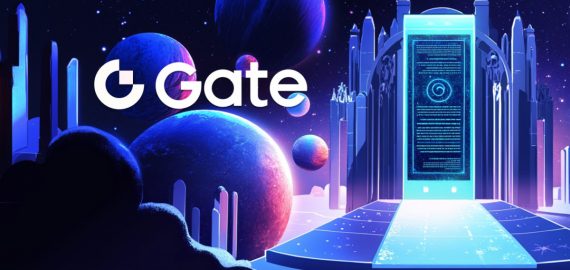Why Polkadot Is the Backbone Web3 Has Been Missing


In Brief
Polkadot, founded by Gavin Wood, aims to unify multiple Layer 1 blockchains by providing a protocol layer for interoperability, scalability, and governance.

One of the key challenges hindering blockchain progress isn’t speed or scalability—it’s fragmentation. Numerous Layer 1s operate independently, each using different protocols. Cross-chain interaction is largely inconsistent. Polkadot, however, offers a distinct solution: rather than developing yet another isolated blockchain, it is a protocol layer that unifies them all.
Founded by Gavin Wood, the former CTO of Ethereum and the creator of Solidity, Polkadot is built from the ground up to prioritize interoperability, scalability, and governance. Its focus extends beyond mere performance, and it aims to establish a cohesive, multi-chain ecosystem where blockchains can communicate securely and natively.
A Modular Architecture for a Multichain Future
Polkadot features a planned modular architecture. Central to it is the Relay Chain, responsible for consensus, coordination, and shared security. While it does not directly run smart contracts or applications, it acts as the foundational layer for linked chains known as Parachains.
Parachains are adaptable layer 1 blockchains that integrate with the Relay Chain, empowering projects with full autonomy over their logic, runtime, and optimizations, without the need to establish their own validator set.
To connect beyond its ecosystem, Polkadot employs Bridges, which link to external networks such as Ethereum and Bitcoin. This approach emphasizes not only creating isolated efficiencies but also establishing connections to the broader decentralized market.
Developer Ecosystem: Real Use and Adoption
More than 200 projects are actively creating and launching across its parachains, covering a bunch of different areas: DeFi platforms, identity systems, zero-knowledge privacy chains, and metaverse infrastructures.
Developers choose Polkadot because it allows them direct control over the logic, performance, and governance of their chains, while still allowing participation in a larger network. The Substrate SDK, used for building parachains, facilitates rapid development of application-specific chains without needing to rebuild the core protocol components.
Decentralized, On-Chain, and Functional Governance
In contrast to many other Layer 1 blockchains where governance is often unclear or controlled by a limited team, Polkadot operates a fully on-chain, active governance framework called OpenGov. Each DOT holder can submit proposals, cast votes, and shape the network’s direction without any intermediaries.
OpenGov establishes the processes for approving upgrades, allocating treasury funds, and implementing runtime changes. This structure allows Polkadot to facilitate upgrades without forks, reducing the need for hard forks and minimizing governance friction during protocol changes.
Scalability Through Parallelism and Specialization
Polkadot achieves horizontal scalability through the parallelization of parachains. Instead of requiring every application to vie for resources on a single chain, parachains run concurrently, each maintaining its own state and logic. This alleviates congestion, enhances throughput, and allows developers to tailor solutions for their requirements.
Furthermore, this architecture sidesteps the one-size-fits-all dilemma that often affects monolithic chains. There’s no need to rely on someone else’s virtual machine. You can create your own runtime, customized entirely to meet your needs.
The Relay Chain offers shared security, allowing smaller or early-stage parachains to launch safely, without having to concern themselves with validator economics from the outset.
What DOT Actually Does
The DOT token has multiple purposes within the Polkadot ecosystem. It is utilized for staking, helping to secure the Relay Chain through a nominated proof of stake system. Additionally, it plays a key role in parachain auctions, where projects stake DOT to acquire a parachain slot. Furthermore, DOT enables on-chain governance, allowing holders to directly influence upgrades and decisions.
In contrast to passive tokens that simply remain in a wallet, DOT is designed for active involvement—whether you are validating, voting, or backing a parachain through crowdloans.
Why Polkadot Matters
Polkadot is not aiming to replace Ethereum or compete with Solana. Instead, it addresses a distinct challenge: achieving protocol-level interoperability and fostering sustainable, decentralized coordination. This initiative prioritizes genuine, long-term infrastructure over mere hype.
For developers, Polkadot delivers flexibility, customization, and uncompromised security. For users, it ensures a continuously evolving network—free from forks, controversy, or governance stalemates. Moreover, for the broader ecosystem, it serves as a crucial element: a coordination layer facilitating the collaborative scaling of blockchains instead of their fragmentation.
Enabling Web3 to evolve into a coherent, scalable, and genuinely functional entity requires a platform like Polkadot to connect all its parts.
Disclaimer
In line with the Trust Project guidelines, please note that the information provided on this page is not intended to be and should not be interpreted as legal, tax, investment, financial, or any other form of advice. It is important to only invest what you can afford to lose and to seek independent financial advice if you have any doubts. For further information, we suggest referring to the terms and conditions as well as the help and support pages provided by the issuer or advertiser. MetaversePost is committed to accurate, unbiased reporting, but market conditions are subject to change without notice.
About The Author
Victoria is a writer on a variety of technology topics including Web3.0, AI and cryptocurrencies. Her extensive experience allows her to write insightful articles for the wider audience.
More articles

Victoria is a writer on a variety of technology topics including Web3.0, AI and cryptocurrencies. Her extensive experience allows her to write insightful articles for the wider audience.

















































